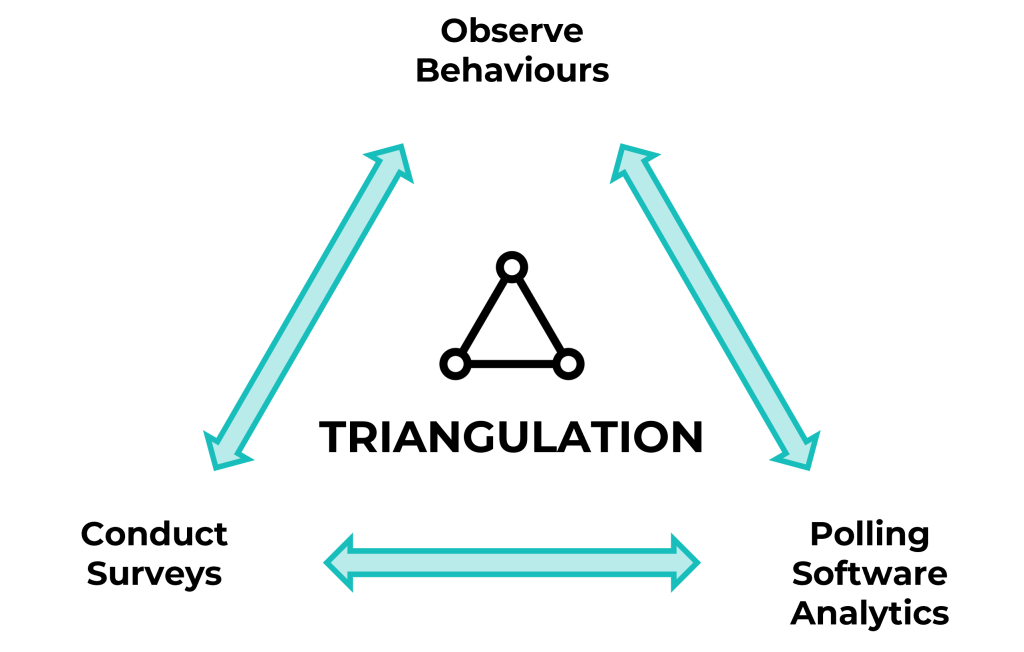Triangulation
Action research commonly employs triangulation as a strategy to establish validity and reliability.
Triangulation involves collecting and analyzing various forms of data to address research questions, mitigating gaps that might arise from relying on a single data source. This approach facilitates corroboration by examining independent pieces of evidence that converge on the same conclusion.

For instance, in a study on enhancing student engagement through online polling in large classrooms, researchers might observe behaviours, conduct surveys, and analyze polling software analytics. Analyzing these diverse data sets individually and collectively ensures alignment, enhancing the credibility of conclusions.
Triangulation, although traditionally involving three data sources, can include more for greater research study reliability. However, researchers must be mindful of increased time and potential complexity in data analysis associated with incorporating multiple data sources, balancing the benefits with practical considerations.
Triangulation Matrix Example
A Triangulation Matrix can be used to determine what sources of data can be used. The table below identifies three different types of data (Artifact, Observation, and Inquiry).
| Research Question | Artifacts | Observational Data | Inquiry Data |
| How can the use of online polling increase student engagement in large classes? | Analytics from polling software | Field notes – record body language during class to see if there are differences when polling is used | Attitude Scale that asks students about the use of online polling |

